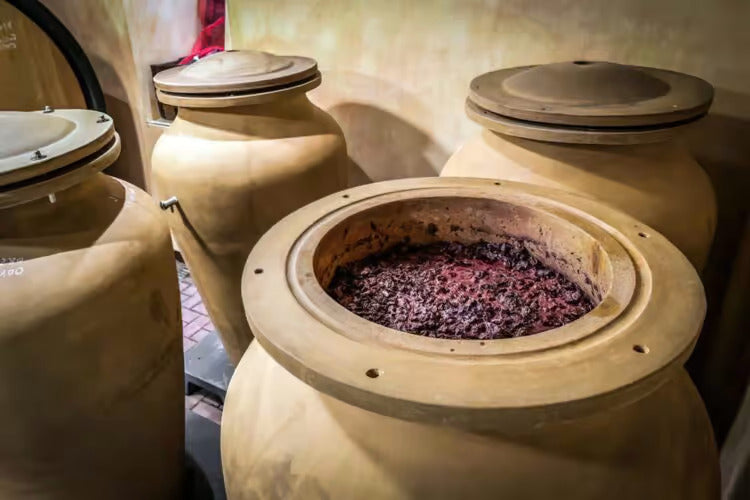
In With the Lingo for October? Try Biodynamics, Natural Wine, Amphorae…

Looking for a new buzzword singing from the wine trade this month? Look no further; biodynamics and anything slightly left of centre has migrated to Ireland from the hipster streets of London. Wine fairs focussing on natural and sustainable practices have been the place to be seen in thriving International wine markets for a while now. Instead of bigger brands the interest is now buzzing around smaller, garage type wineries doing things with fermenting grapes that haven’t been done since the Greeks buried amphorae BC!
So what do these new buzzwords mean? Organics and biodynamics are fairly straight forward and have legally recognised definitions and regulating bodies to ensure that members adhere to the guidelines. For organic wines this involves the banning of pesticides and tighter restrictions on herbicides and other treatments. Biodynamics rely on the natural rhythms of the earth using weird but wonderful ‘preparations’ to treat the vines. Natural wines on the other hand…… this is a category that is so new it hasn’t yet been defined and as such quality and understanding are not always guaranteed. Don’t be alarmed when you are offered a cloudy orange wine that smells slightly like scrumpy – this is normal! I might be shot down, but personally I think that on a comparative basis the fuss around natural wines is similar to the Hans Christian Andersen classic ‘ The Emporer’s new clothes’. In the words of biodynamic activist and winemaker Nicolas Joly: “The term natural wine is nothing more than a drawer in which to put all the winemakers who didn’t make enough effort to convert to organics and biodynamics.”

Not ones to shout the loudest in a crowd, we have always forged relationships with quality driven producers who recognise that great wine is made in the vineyard. One of these is the Avondale Winery in South Africa. Next month Jonathan Grieve, owner and exceptionally well qualified biodynamic blogger is coming over to de-mystify some of the misconceptions people have about biodynamics. You can catch a glimpse of his farm in the short video about his flock of hardworking ducks below. Book into the tasting on Thursday 3rd November at 7pm to try his wines, amongst other outstanding biodynamic examples. (Looking at the list of biodynamic preparations below perhaps lock up your cats before you head out for the evening.)
Spray preparations
- The first one (500), “horn-manure”, is made from cow manure. This manure is put into a cow horn and then buried for 6 months over winter in fertile soil.
- The second one (501), “horn-silica” is made from finely ground quartz . This is put into a cow horn and buried in the soil during summer for 6 months to gather the Earth’s summer forces.
Preparations normally added to compost and manure
Four of these preparations undergo a fermentation process beneath the earth enclosed within an animal organ sheath.
- A stag’s bladder is used for yarrow flowers (502)
- For chamomile the small intestine of a cow (503)
- For oak bark the skull of a domestic animal (505)
- Dandelion flowers are carefully wrapped in the mesentery of a cow (506).
Two of the preparations require no such ‘cover’.
- Stinging nettle is buried directly in the soil for a whole year (504)
- Valerian a liquid extract is obtained directly from the flowers (507).

Leave a comment